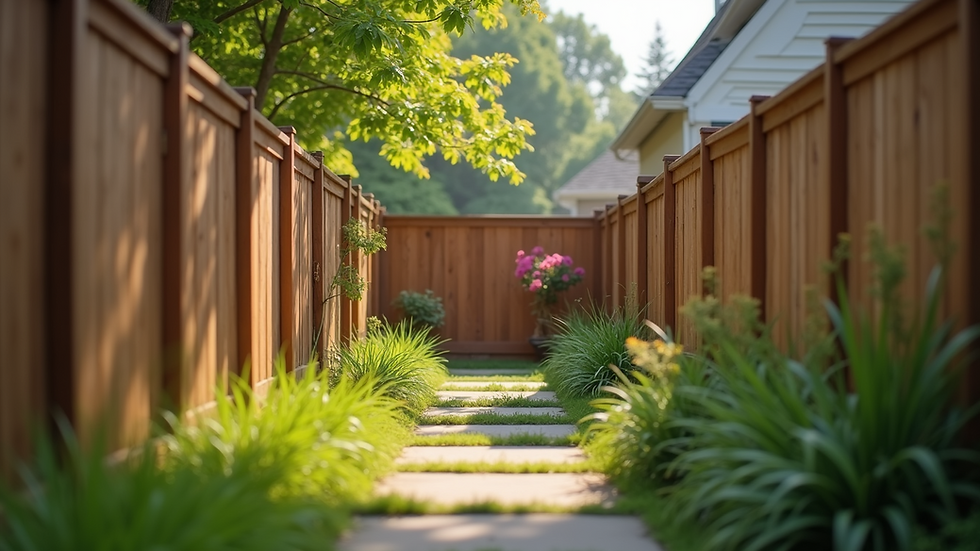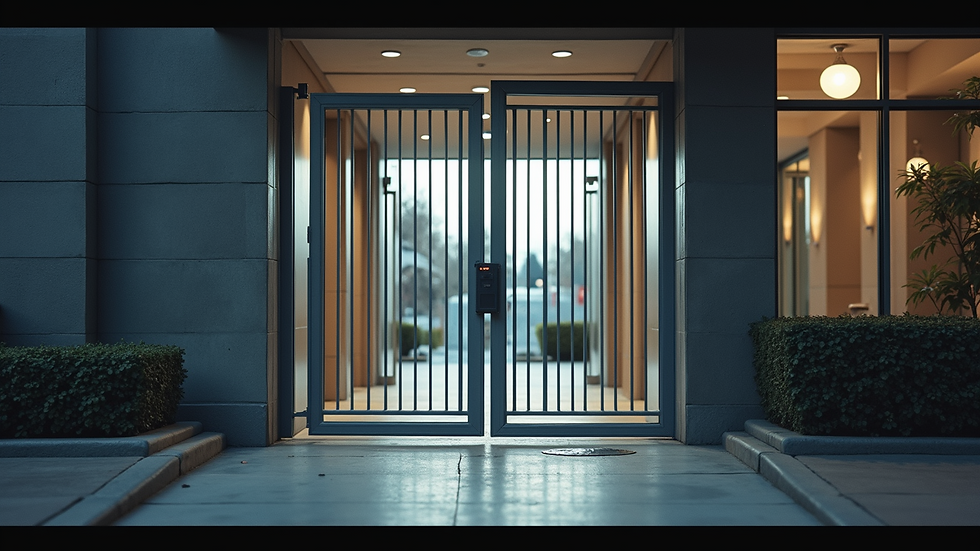Maximize Privacy with Expert Wood Fencing
- allstarfencesoluti
- Jul 22
- 5 min read
Updated: Aug 5
In today's world, privacy is more important than ever. Whether you live in a bustling city or a quiet suburb, having a private space can greatly enhance your quality of life. One of the best ways to achieve this is through expert wood fencing. Not only does a well-constructed wood fence provide a barrier from prying eyes, but it also adds beauty and value to your property.
In this blog post, we will explore the benefits of wood fencing, the different types available, and how to choose the right one for your needs. We will also discuss maintenance tips to ensure your fence lasts for years to come.
The Importance of Wood Fencing for Privacy
Wood fencing plays a crucial role in enhancing your privacy. It acts as a shield against the outside world, allowing you to enjoy your outdoor space without feeling exposed. A solid wood fence can create a secluded area in your yard, making it a perfect retreat.
The Benefits of Wood Fencing
Wood fencing offers numerous advantages that make it a popular choice for homeowners. Here are some key benefits:
Privacy: A solid wood fence can create a secluded area in your yard, allowing you to enjoy your outdoor space without feeling exposed.
Aesthetic Appeal: Wood fences come in various styles and finishes, making it easy to find one that complements your home’s architecture.
Durability: When properly maintained, wood fences can last for decades. They are sturdy and can withstand various weather conditions.
Eco-Friendly: Wood is a renewable resource, making it a more environmentally friendly option compared to vinyl or metal fences.
Customization: Wood fencing can be easily customized to fit your specific needs. You can choose the height, style, and finish that best suits your property.
Types of Wood Fencing
When it comes to wood fencing, there are several types to consider. Each type has its unique features and benefits. Here are some popular options:
1. Privacy Fences
Privacy fences are typically tall and solid, providing maximum seclusion. They are perfect for backyards where you want to create a personal oasis.
2. Picket Fences
Picket fences are a classic choice that adds charm to any home. They are usually shorter and have gaps between the boards, allowing for visibility while still providing a sense of boundary.
3. Split Rail Fences
Split rail fences are more rustic and are often used in rural settings. They consist of horizontal rails supported by vertical posts, making them less private but great for defining property lines.
4. Stockade Fences
Stockade fences are similar to privacy fences but often have a more decorative top. They provide good privacy while adding a unique touch to your yard.
5. Lattice Fences
Lattice fences are great for adding a decorative element to your yard. They can be used as a standalone fence or as a topper on a solid fence for added privacy.
Choosing the Right Wood for Your Fence
Selecting the right type of wood is crucial for the longevity and appearance of your fence. Here are some popular wood options:
Cedar: Known for its natural resistance to decay and insects, cedar is a popular choice for fencing. It has a beautiful color and aroma that many homeowners love.
Redwood: Similar to cedar, redwood is durable and resistant to the elements. It has a rich color that can enhance the look of your property.
Pine: Pine is a more affordable option but requires more maintenance. It is often treated to resist rot and insects.
Spruce: Spruce is another budget-friendly choice. It is lightweight and easy to work with, but it may not last as long as cedar or redwood.
Installation Tips for Your Wood Fence
Installing a wood fence can be a DIY project or a job for professionals. Here are some tips to ensure a successful installation:
Check Local Regulations: Before starting, check with your local authorities about zoning laws and fence height restrictions.
Plan Your Layout: Measure your yard and plan where the fence will go. Mark the corners and any gates you want to include.
Choose Quality Materials: Invest in high-quality wood and hardware to ensure your fence lasts.
Dig Deep Post Holes: Posts should be buried at least one-third of their height in the ground for stability.
Use Concrete for Stability: Setting your posts in concrete can provide extra support, especially in windy areas.
Allow for Expansion and Contraction: Wood can expand and contract with temperature changes, so leave some space between boards.
Maintenance for Longevity
To keep your wood fence looking great and lasting long, regular maintenance is essential. Here are some tips:
Clean Regularly: Remove dirt, debris, and mildew with a gentle soap solution and a soft brush.
Inspect for Damage: Regularly check for signs of rot, insect damage, or loose boards. Address any issues promptly.
Stain or Seal: Applying a wood stain or sealant can protect your fence from moisture and UV rays. This should be done every few years.
Trim Vegetation: Keep plants and grass away from the base of your fence to prevent moisture buildup.
Enhancing Privacy with Landscaping
In addition to installing a wood fence, you can enhance your privacy with landscaping. Here are some ideas:
Plant Trees or Shrubs: Tall trees or dense shrubs can create a natural barrier that complements your fence.
Use Climbing Plants: Vines and climbing plants can be trained to grow on your fence, adding greenery and additional privacy.
Create a Garden: A well-placed garden can act as a natural screen, providing beauty and seclusion.
The Cost of Wood Fencing
The cost of wood fencing can vary widely based on several factors, including:
Type of Wood: Higher-quality woods like cedar and redwood will cost more than pine or spruce.
Height and Style: Taller and more intricate designs will generally be more expensive.
Installation: If you hire professionals, labor costs will add to the overall price.
Location: Prices can vary based on your geographical area and local market conditions.
Finding the Right Contractor
If you decide to hire a professional for your wood fencing project, finding the right contractor is crucial. Here are some tips:
Get Recommendations: Ask friends, family, or neighbors for recommendations.
Check Reviews: Look for online reviews and testimonials to gauge the contractor's reputation.
Request Quotes: Get quotes from multiple contractors to compare prices and services.
Ask About Experience: Ensure the contractor has experience with wood fencing specifically.
Final Thoughts on Wood Fencing
Investing in a wood fence is a smart choice for anyone looking to enhance their privacy and improve their outdoor space. With various styles and materials available, you can find the perfect fence to suit your needs.
Remember to consider maintenance and installation options, and don’t hesitate to seek professional help if needed. With the right wood fencing, you can create a beautiful and private sanctuary in your own backyard.




Comments